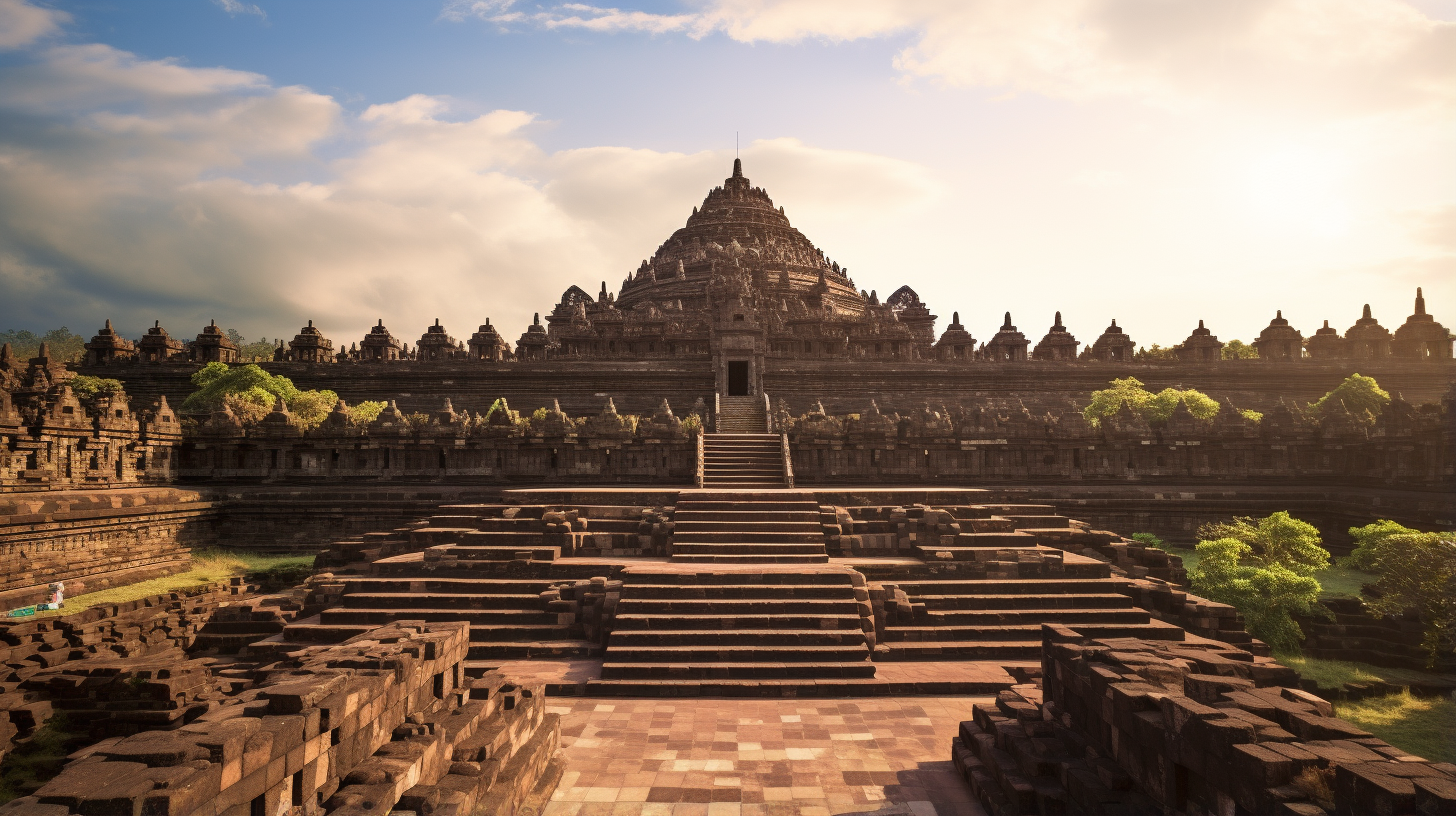The world is filled with architectural wonders that have baffled historians, archaeologists, and scientists for centuries. These structures, often attributed to the ingenuity of ancient civilizations, continue to captivate our imaginations.
Today, we embark on a journey to explore three remarkable pyramid sites that have left us questioning the conventional explanations and pondering their true purpose.
1. Gnung Penang: The Mountain of Enigmas
Nestled in Western Java, Indonesia, lies a site known as Gnung Penang, or the “Mountain of Light.” What was initially thought to be just another mound of dirt and rubble turned out to be a monumental revelation.
The excavation led to the discovery of a 300-foot-tall step pyramid, estimated to be over 10,000 years old. This colossal structure, constructed from millions of tons of Basalt, leaves us wondering about the civilization that built it.
Researchers have pieced together the puzzle, suggesting that this pyramid was a product of a highly advanced culture, perhaps from the submerged landmass of Sunderland, which existed around 20,000 years ago.
Local legends even speak of star travelers, those who came from the stars, as the builders of this enigmatic pyramid. Were they extraterrestrial beings, or did ancient humans possess knowledge and capabilities that continue to elude us today?
2. Borobudur: The Ascension Pyramid
On the island of Java, Indonesia, stands the Borobudur temple, the largest Buddhist monument in the world. Built during the 8th and 9th centuries A.D., this pyramid-like structure defies conventional pyramid design but intrigues with its intricate symbolism.

The Borobudur temple is a pilgrimage site where devotees ascend from the base to the top, symbolizing their journey towards Nirvana.
What strikes researchers as curious are the 72 bell-shaped structures, known as stupas, that crown the pyramid. Each stupa houses a seated Buddha, but their shape and arrangement have led to speculation about ancient flying craft.
Could the Buddhists of that era have viewed Buddha as a celestial traveler arriving in disc-shaped vehicles from the cosmos? The Borobudur temple invites us to explore the intersection of spirituality and technology in ancient cultures.
3. The Great Pyramid of Giza: A Monument to the Unexplained
The Great Pyramid of Giza, one of the most iconic structures on Earth, continues to astound us with its precision engineering and architectural sophistication.
Rising 480 feet tall, with over 2 million limestone blocks, this pyramid remains an unmatched marvel of construction. Its builders managed to level 13 acres to within a fraction of an inch, a feat that perplexes modern engineers.

While mainstream archaeologists attribute the Great Pyramid to Pharaoh Khufu around 2500 B.C., alternative theories suggest a deeper and more mysterious purpose.
Some propose that it was a power plant, tuned to resonate with Earth’s energies and convert them into electromagnetic energy. Others ponder whether the pyramid was a geomechanical device, intricately connected to the Earth’s vibrations.
The pyramids at Giza defy easy explanations, leaving us with more questions than answers. Were they really tombs, or do they conceal a profound and enigmatic purpose that has eluded us for millennia?
Video:
Conclusion
In conclusion, these pyramid sites across the globe continue to pique our curiosity, challenging conventional narratives and inviting us to delve deeper into the mysteries of our ancient past. While we may not have all the answers, the allure of these architectural wonders persists, inspiring us to explore the unknown and embrace the enigmas of our history.

9 thoughts on “The Enigmatic Mysteries of Ancient Pyramids”
Comments are closed.